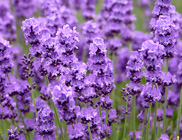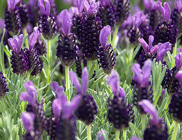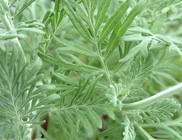Lavender classification and naming
The genus Lavandula belongs to the family of plants known as Lamiacae (which means “lipped” and refers to the lip-shaped flowers) and consists of about 39 species native to the Atlantic Islands, India, the Mediterranean region, Middle East, North Africa and West Africa. The name is derived from the Latin lavare meaning “to wash”. Lavenders are favoured for their scent and evergreen foliage whether planted as hedges or as specimens. They have a long and illustrious history of uses, both medicinally and decoratively. Their value as a culinary herb has increased immensely in more recent years.
Classification
The genus Lavandula has undergone major revision in the last year the basis of which is research presented in the book The Genus Lavandula, edited by Tim Upson and Susyn Andrews. The result is that lavenders are now classified (taxonomically arranged) in eight sections according to their botanical characteristics. Sections I-IV are represented on this website. The characteristics of each are detailed in the plant list. Sections V-VIII are too fragile for public consumption.
Section I Lavandula
Three species and two hybrids native to Central and Southwest Europe.
The species are:
1. angustifolia (True Lavender) subsp. angustifolia
2. latifolia (Spike Lavender)
3. lanata (Woolly Lavender)
The hybrids are:
x intermedia (angustifolia x latifolia) (Lavandin)
x chaytorae (lanata x angustifolia)
Section II Dentatae
One species native to the Mediterranean Basin, south-western Arabian Peninsula and northeast Africa.
1. dentata var. dentata and var. candicans
Section III Stoechas
Three species native to the Mediterranean Basin and Canary Islands and one hybrid known predominantly from cultivation.
1. pedunculata
2. stoechas, of which there are several subspecies
2. viridis
Many hybrids of the above.
Section IV Pterostoechas
Sixteen species native to the Atlantic Islands, the Mediterranean Basin, southern Europe, North Africa and south west Asia. Those we sell mail order are:
1. buchii var. buchii
2. canariensis subsp. canariensis
3. minutolii var. minutolii
4. pinnata
5. rotundifolia
One hybrid is:
1. x christiana (canariensis x pinnata)
Section V Subnuda
Ten species native to South Arabia and Somalia.
Section VI Chaetostachys
Two species native to Central and South India.
Section VII Hasikensis
Two species native to Oman and Iran.
Section VIII Sabaudia
Two species native to Saudi Arabia, Yemen, Egypt and Eritraea.
There are also lavenders known as intersectional hybrids, crosses between lavenders from two different sections:
1. x heterophylla (dentata x latifolia)
2. x ginginsii (dentata x lanata)
Naming
There is a complex and confusing history in the naming (nomenclature) of lavender species and cultivars (named varieties). This is particularly true when referring to any lavenders as spica, a term that different botanical and horticultural authorities in the past have applied to angustifolia and latifolia species and the x intermedia hybrids, on separate occasions. The resulting confusion led to the name becoming a nomen utique rejiciendum (a name certainly rejected). It is now, or at least should be, completely redundant.
Referring to lavenders as English, French, Spanish, etc. is equally confusing, none of which are strictly true and all of which are best avoided. The Romans are believed to have introduced lavender to England, but there is no evidence of live lavender plants in any part of the UK until the 13th Century, so there are no native lavenders to the UK. The common use of the terms French Lavender and Spanish Lavender, although often misapplied, has regrettably necessitated their inclusion on this web site where appropriate.







